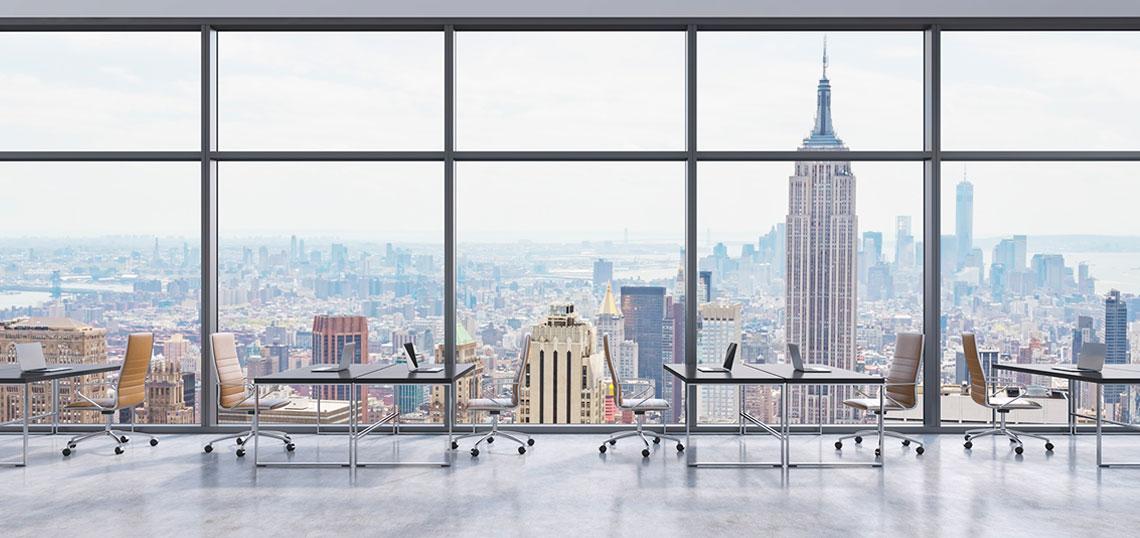Governor Andrew Cuomo's 2022 proposal calls for the rezoning of Midtown commercial buildings into residential to tackle two pandemics problems: ghost commercial buildings and increased demand for housing. Despite introducing the plan, the governor's office hasn't released any specifics on how rezoning can be accomplished nor how long it would take. This article explores the process and timing.
New York City likes to be number one at everything—and it often is. Perhaps one not-so-well-known fact is that NYC was the first city in the U.S. to implement zoning laws over 100 years ago. The "1916 Zoning Resolution" (named for the year it was created), was sparked by the speculative development at 120 Broadway. The Equitable Building’s proposed 41 stories caused quite a ruckus from those who feared its disproportionate height and bulk would cast too large of a shadow on the neighborhood. From then on, the city’s zoning took off into its complicated labyrinth of laws.
There are three types of zoning districts: commercial (i.e. retailers, service providers and offices), manufacturing (i.e. warehouses), and residential. Despite the fact that residential zones account for 75 percent of NYC’s land area, the cascading effects of COVID have highlighted the great need for even more housing in NYC.
REBNY’s senior vice president Paimaan Lodhi told Fast Company, “there’s roughly 150 million square feet worth of [Class B and C office buildings] in Manhattan alone. If you were to just apply a conversion rate of 10 percent we think you could get something like 14,000 units built, and a pretty sizable portion of that could be affordable housing."
COVID wreaked havoc throughout the city as office buildings have become the new ghost buildings. All of this empty square footage reignited talk about converting commercial properties to residential as a natural segue to help stop the office vacancies while satisfying the housing needs.
Far from a new idea, this discussion has been recently magnified by the pandemic’s path of destruction across the world. Some have even gone so far as to suggest the shiny new, yet eerily desolate, Hudson Yards be converted to much-needed low-income housing.
Governor Cuomo’s 2022 proposal specifically called for the creation of incentives to convert commercial buildings into affordable housing by allowing a large portion of Midtown to transform its hotels and office buildings into housing (as long as 20 percent of the residential units were affordable or for supportive housing).
But, an article in the New York Daily News warns, “Although at first blush this seems a creative and flexible response to the dual problems of the pandemic-caused decline in office and hotel occupancy and the city’s persistent shortage of affordable housing, the proposal would result in a dramatic loss of the city’s control over its own land-use policies and tax revenue."
Real Capital Analytics’ Jim Costello suggested to Globe Street, "that cutting red tape isn’t the only factor limiting conversions. Repurposing a building is costly, and the only real way to make it pencil out is to buy the asset at a discount."
Past Rezoning
In the early 1990s, NYC created the 421-g Tax Incentive program, a real estate tax exemption and abatement program that allowed for the conversion of commercial buildings into multiple dwellings south of Murray Street, City Hall, and the Brooklyn Bridge. This program created 25,000 residential units in former offices but it took over two decades.
According to REBY’s Lodhi, for the current Midtown plan to work, it would require coordination between city and state, getting office building owners to agree to the conversions once the area has been rezoned, and, most importantly, time, “the market has to come back."
How to Rezone
Urbanize NYC spoke to Furman Center Senior Policy Fellow Mark A. Willis about the prospect. Willis says he is very optimistic about the future of the city “based on its long history of resilience."
He believes that allowing Midtown to be more residential would be less of a change than the residential conversion of office buildings was for downtown (which used to go dark at 5 pm). Midtown is already quite suited to becoming more of a mixed-use neighborhood and is “very attractive to many with all its cultural venues and retail services."
Willis adds that the government should be moving now to make conversions as easy as possible to facilitate any adjustments in the mix of uses prompted by changes in the relative demand for office versus residential space.
Willis concludes, “The city has reinvented itself innumerable times. The one constant in New York is change and we want to make sure that the city can do it again if called for in a post-pandemic world."
In the end, what will determine the pace of change will be the economy, what building owners and developers choose to do, and demand.
Currently, the average Class B Midtown rental is currently $64 per square foot versus the average of $1,249 for residential. And, even if a building chooses to stay commercial, it may need to do massive upgrades due to the new requirements and expectations coming out of this pandemic (e.g. ventilation)
Although there are many hurdles to overcome, the one certainty is that the city will change, as it does.






